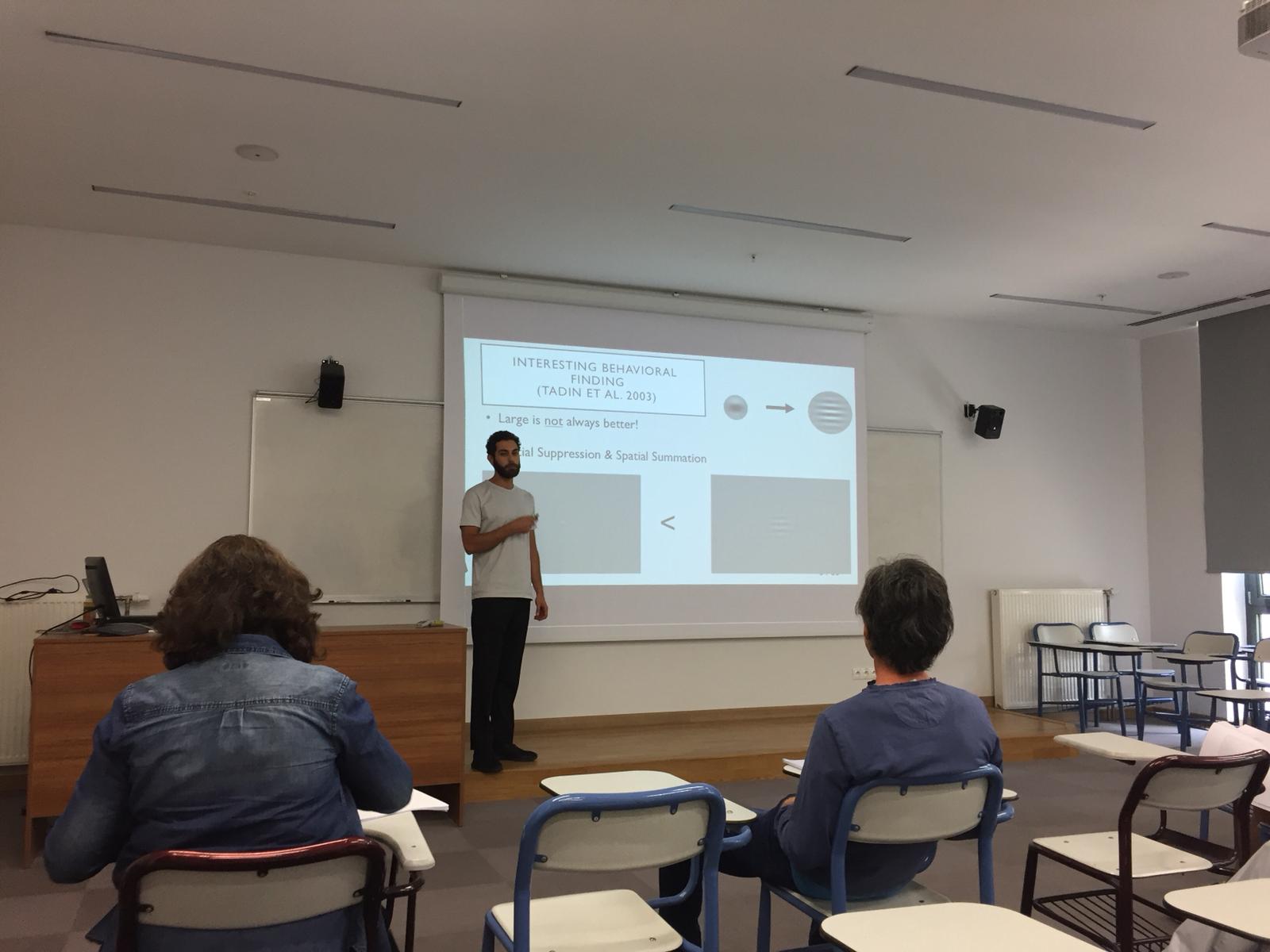Görkem Er, from UMRAM, has successfully defended his MSc thesis on September 13th, 2018.
He is currently enrolled in Neuroscience Master program with his supervisor Hüseyin Boyacı at Bilkent University.
Thesis Title: The Role of Contrast and Size In Motion Perception: Behavioral And Neuroimaging Study Of Center-Surround Interactions In Primary Visual Cortex (V1) And Middle Temporal Area (MT+).
Abstract: Behavioral experiments have demonstrated that observers’ ability to discriminate the drift direction of a grating improves as its size increases if the grating has a low contrast, and deteriorates if it has a high contrast [1]. It has been proposed that receptive field organization in middle temporal (MT+) visual area underlies this counter-intuitive perceptual effect. Supporting evidence for this proposal has been provided in literature [2]. However, previous studies have not unequivocally showed that MT+ is the sole area whose activity underlies the perceptual effect.
Here, we investigate the activity patterns of primary visual cortex (V1) and middle temporal (MT+) in response to drifting Gabor patches in differing size and contrast levels to elucidate the neural region involved in size-contrast interac- tion in motion perception. We first replicated the findings in the literature with a behavioral experiment, where small or large (1.67 and 8.05 degrees of visual angle) drifting gratings with either low (2%) or high (99%) contrast levels were presented at the periphery (centered 9.06 degrees of visual angle to left and right of fixation). We measured the duration thresholds (79%) for accurately discrim- inating the drift direction of gratings for eleven participants using an adaptive staircase and two-alternative forced choice (2AFC) design. In line with previous literature, we observed that increasing the size of the low-contrast stimuli resulted in decreased discrimination threshold, while for high-contrast stimuli, increasing the size resulted in increased discrimination threshold.
In the second stage of the study, six observers participated in a block design fMRI study with the same spatial configuration and contrast levels used in the behavioral experiment. We first identified the region of interests (ROI) for visual area V1 and MT+ separately for all participants. Then, we identified a ”sub-ROI” that corresponds to the region that was selectively responsive to the small sized stimuli (1.67 degrees) using an independent localizer. With this setup, we allowed for both large and small sized gratings to stimulate the sub-ROI throughout the entire scan. Therefore, changes in Blood Oxygenated Level Dependent (BOLD) response at the sub-ROI in response to large compared to small sized gratings indicated the influence of the surrounding region to the center of the gratings. In area MT+, we observed that increasing the size of the grating increases the BOLD activity if the stimuli have low contrast, compared to high contrast. In other words, surrounding region had a facilitative influence to the group of MT+ neurons encoding the center of the stimuli if the stimuli had low contrast. This neuronal facilitation observed with the neuroimaging data explain the enhance- ment of the performance with increasing the size of the low-contrasted stimuli observed at the behavioral experiment. In V1, however, increasing the size of the high-contrasted gratings increased the BOLD activity, compared to activity evoked by increasing the size of the low-contrasted gratings. On the whole, we show that center-surround interaction in V1 and MT were differentiated in re- sponse to peripherally viewed drifting Gabor patches at differing contrast and size levels, hence we provide further evidence that the perceptual size-contrast interaction effect is likely to originates at cortical area MT+.
